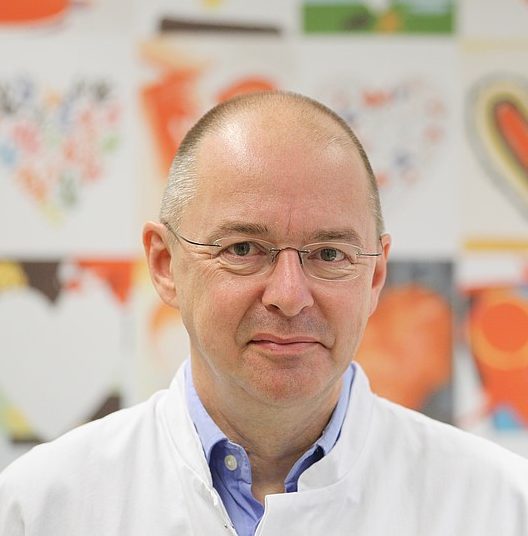A team of Steinbeis experts draws on the findings of stem cell research into environmental toxicology
Atmospheric pollution caused by particulates is emerging as a central factor in the development of cardiovascular, blood, and tumor diseases. Increasing exposure to nanoparticles – originating from combustion engine emissions, medical products, consumer cosmetics, and food additives – poses a health risk and this is entering more and more into the focus of debate surrounding medical issues. A careful assessment of the biological impacts is required to provide a basis for regulatory measures and product approvals. Developing these measures and processes is the task being worked on by experts at the Steinbeis Transfer Center Cardiovascular Research.
Inhaling particles contained in air contaminated by exhaust emissions and other sources of environmental pollution with ultrafine nanoparticles (less than 100nm) has proven to be a central factor in the development of cardiovascular disease, autoimmune disease, and cancer. In addition to this, the increasing use of industrial metallic and chemical nanoparticles in pharmaceutical and cosmetic products for consumers – not to mention foodstuffs – is causing a dramatic rise in exposure to environmental influences resulting in more and more concerns regarding safety. Toxicity stems from the uncontrolled intake of ultrafine nanoparticles through the lungs, intestines, and skin. This contrasts to larger particles, which the body has defenses against thanks to its immune cells.
For a number of years, the experts at the Rostock-based Steinbeis Transfer Center Cardiovascular Research have been looking at the uptake and processing of metallic and polymer-coated nanoparticles in the stem cells of human bone marrow. The stem cells are capable of processing the uptake of certain nanoparticles and can become damaged in terms of function. It is recognized that both damage to the cell nucleus and stem cell gene mutations are decisive triggers in the human body for disease development, and the Steinbeis experts have decided to focus their highly advanced analysis techniques on damage mechanisms. Their analysis involves high-resolution light microscopy (Zeiss Elyra PS-1) and molecular characterization of the function (GLP) of stem cells within the body. Their work will make it possible to apply stem cell research know-how directly to environmental toxicology.
Regulatory work in this area is currently of major importance within the European Union following the publication of a report by the European Chemicals Agency (ECHA), the committee that assesses materials that pose a hazard to health. The report looked at the high health risk posed by titanium dioxide particles, and the outcome is likely to be stricter regulatory measures imposed by the EU Commission. The report highlighted how titanium oxide and other nanoparticles enter the body through pulmonary alveoli and why this is pertinent to disease development. As well as causing local inflammation in the lungs, which can develop into asthma, it causes inflammation throughout the human body and this can be linked to the activation and proliferation of stem cells. Until now, it had not been understood how significant nanoparticle translocation is via the blood into body cells, especially the uptake of highly replicative cells: stem cells in bone marrow, the immune system, and the organs. The particles are capable of triggering genotoxicity (including mutations), especially with chronic inflammation stimulation, and this can lead to autoimmune conditions, rheumatism, cardiovascular disease, or even cancer degeneration of the stem cells. The cell uptake of every ultrafine nanoparticle is thus a primary factor in causing damage to the nuclei of stem cells, especially if they can pass freely through the 30nm pores of the membrane. As a result, new diagnostic techniques are needed to understand the genotoxicity and mutation evaluations of stem cells following exposure to nanoparticles. This would facilitate better judgments regarding how safe it is to be exposed to nanoparticles.
This is of particular importance when it comes to protecting developing organisms during pregnancy and infant growth phases. Similar to the approach with chemical substances, radiation, and epidemic infections, the aim must be to understand how to handle nanoparticles safely. To achieve this, it will be imperative to work on an interdisciplinary level.
The Steinbeis Transfer Center Cardiovascular Research is currently working in close collaboration with stem cell experts, natural scientists, biotechnologists, computer scientists, and medical experts with the aim of developing the necessary analytical methods and techniques for assessing medical risks.
Contact

Professor Dr. med. Gustav Steinhoff
Professor Dr. med. Gustav Steinhoff is a professor of cardiac surgery at the University Medical Center Rostock and director of the Reference and Translation Center for Cardiac Stem Cell Therapy. He is a leading international expert in regenerative medicine, cardiac stem cell therapy, and gene therapy with nanoparticles. Steinhoff has been the director of the Steinbeis Transfer Center Cardiovascular Research at the University Medical Center Rostock since 2002. The center offers its customers support with application-based cardiovascular scientific research under contract; pre-clinical development, evaluation, and safety testing of cardiovascular biomaterials, transplants, and implants; the drafting of guidelines for medical treatment processes; and the drafting of medical/ethical and economic fundamentals for the ongoing development of treatments for cardiovascular diseases.
Professor Dr. med. Gustav Steinhoff
Steinbeis Transfer Center Cardiovascular Research (Rethwisch-Börgerende)

